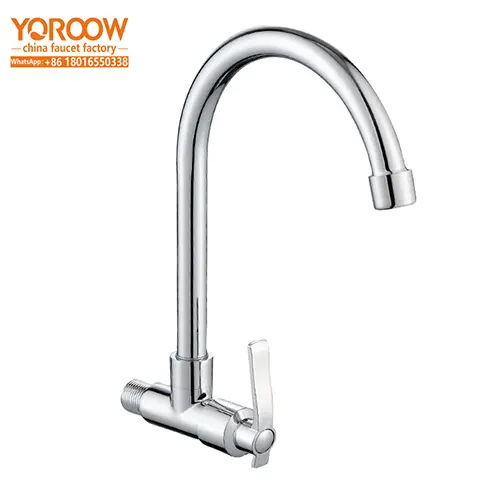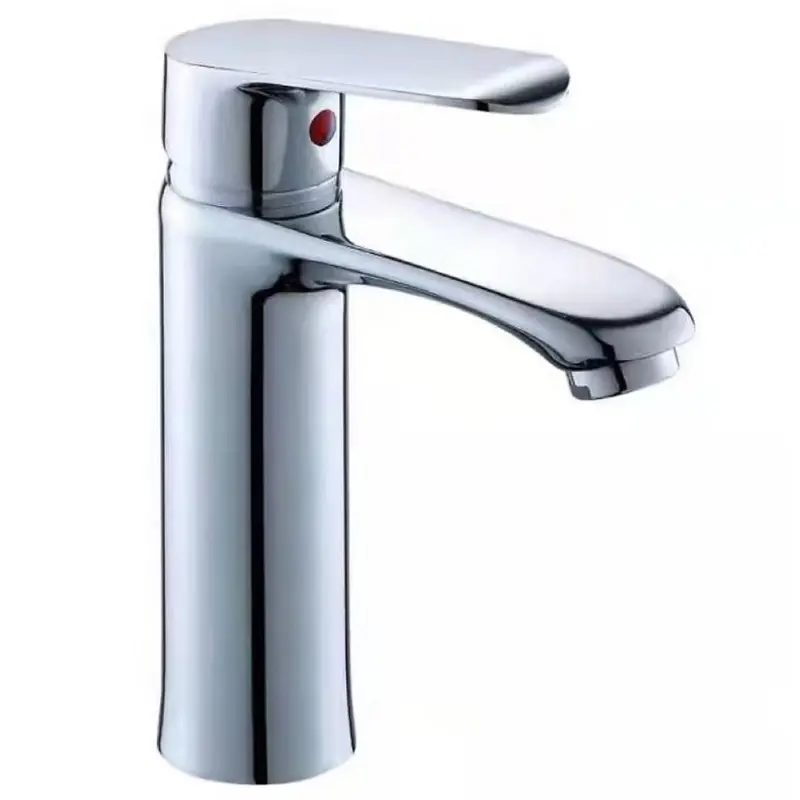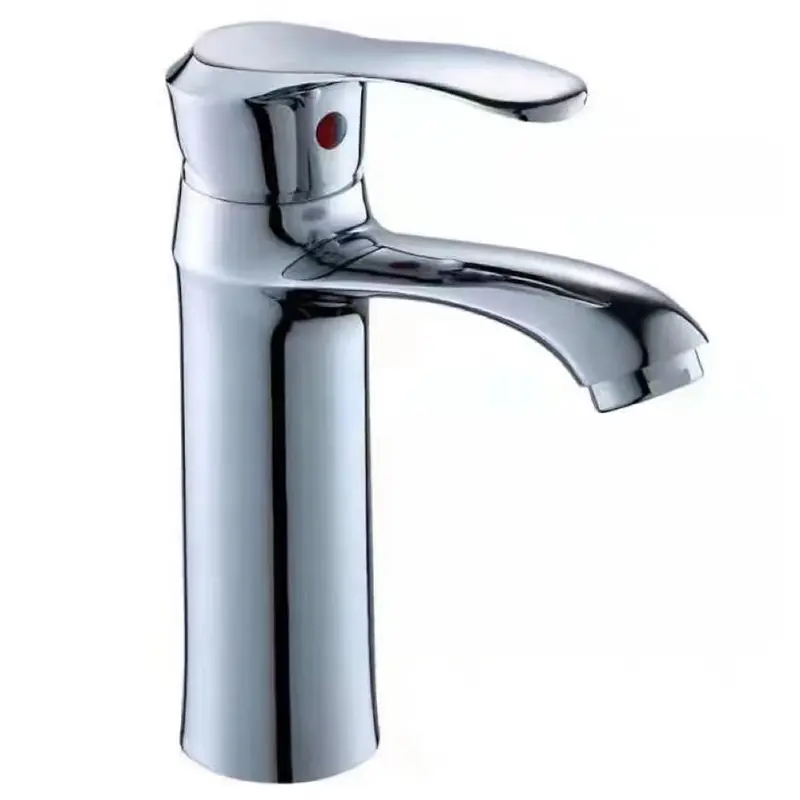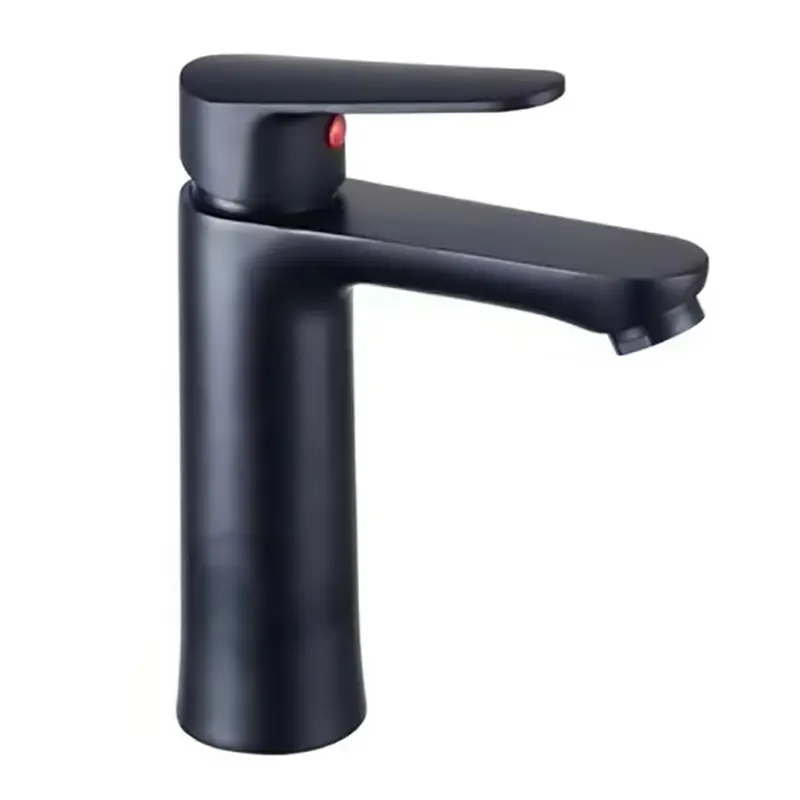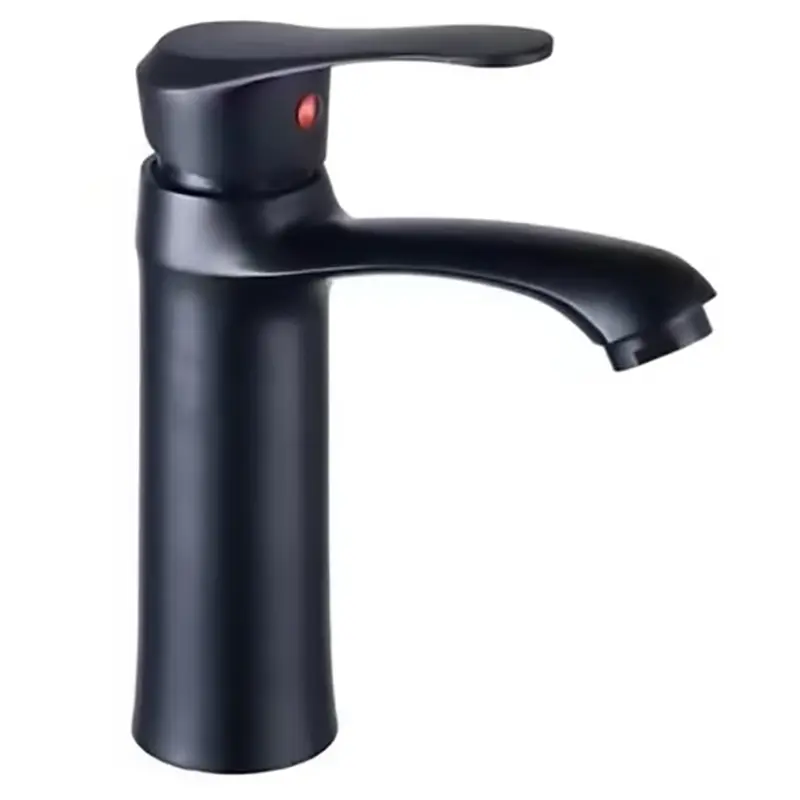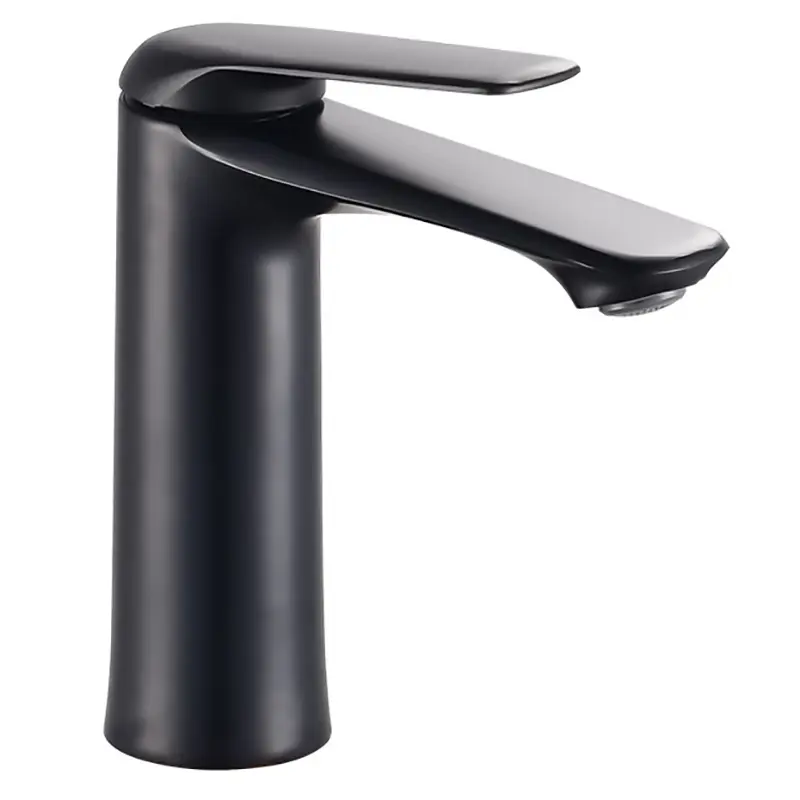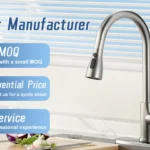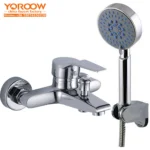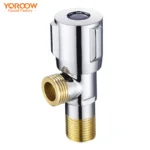In the modern kitchen equipment system, kitchen steel taps single – cold basin faucets have become a standard choice for both household and commercial kitchens, thanks to the inherent sturdiness and corrosion resistance of stainless steel. Relying on mature manufacturing processes and strict quality control systems, Китайские заводы по производству смесителей produce kitchen steel taps single – cold basin faucets that not only achieve a mirror – smooth surface through precision forging but also possess excellent properties such as high – temperature resistance and acid – alkali corrosion resistance. These faucets can maintain stable performance and a clean appearance even under long – term and frequent use. Their simple and smooth design lines can seamlessly integrate into various modern kitchen decoration styles, while a wide range of styles, sizes, and functions fully meet the personalized installation needs of different users. The following provides a detailed operation guide and professional advice covering the entire installation process.
(I) Меры предосторожности перед установкой изделия
Meticulous preparations before installation are crucial for a smooth process. The first essential step is to shut off the main water valve at home, following the sequence of closing hot water first and then cold water to prevent residual water pressure from causing water splashing during installation. Subsequently, conduct a thorough inspection of the kitchen steel taps single – cold basin faucet and its accessories, including the faucet body, inlet pipes, fixing nuts, rubber sealing gaskets, and installation instructions. Pay special attention to whether there are any deformations or cracks at the interfaces of the inlet pipes, as such minor damages may lead to potential leakage issues in the future. In case of missing or damaged parts, immediately contact the after – sales department of Chinese faucet factories. With their comprehensive after – sales service system, replacement parts can be obtained quickly.
Meanwhile, accurately measure the parameters of the installation area. For countertop materials, when dealing with quartz stone countertops, be cautious of edge chipping during hole – opening and it is recommended to use specialized stone hole – openers; for marble countertops, avoid installing at the joints to prevent cracking due to uneven stress; for stainless steel countertops, the edges of the holes should be polished in advance to eliminate sharp corners. The thickness of the countertop should be strictly controlled within the range of 10 – 50 millimeters. A thickness too thin may result in unstable fixation, while a thickness too thick can affect the tightening effect of the nuts.
(II) Необходимые инструменты для установки
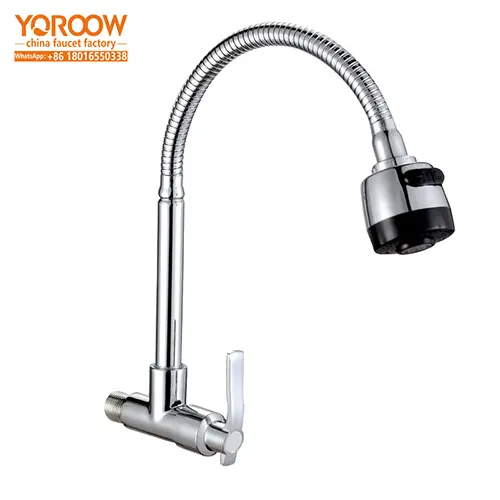 Professional installation tools are the foundation for ensuring installation quality. The essential tools include:
Professional installation tools are the foundation for ensuring installation quality. The essential tools include:- Adjustable Wrench or Pipe Wrench: Select a model with an opening range of 6 – 32 mm, suitable for nuts and water pipe interfaces of different specifications, ensuring uniform torque during tightening;
- Phillips/Slotted Screwdriver: Used for removing old faucets or installing fixing brackets. It is advisable to choose a screwdriver with a magnetic tip for easy picking up of small screws;
- PTFE Tape: Made of polytetrafluoroethylene, when wrapping, maintain an inclination angle of 30° and overlap each turn by 1/3 of its width. The standard number of wrapping turns is 10 – 15 for optimal sealing;
- Tape Measure: With an accuracy of up to 1 mm, used to measure the position and size of the holes on the countertop to ensure a proper fit between the installation holes and the faucet;
- Optional Tools: A spirit level can accurately calibrate the verticality of the faucet, controlling the error within ±0.5°; a rubber mallet can be used when installing gaskets to avoid damaging components from direct metal impact.
(III) Подготовительные шаги перед установкой
The cleaning and pre – treatment work before installation directly affects the sealing effect and installation stability. Use a neutral cleaner with a soft cloth to thoroughly remove oil stains, water stains, and dust from the installation area of the countertop and sink, ensuring a dry and clean surface. If on – site hole – opening is required, follow the principle of “mark first, then open”. Use a tape measure and pencil to accurately mark the hole positions, and the diameter of the holes should be 2 – 3 mm larger than the diameter of the faucet base to leave installation allowance. When using specialized hole – opening equipment, advance slowly at a uniform speed to prevent local overheating and deformation of the countertop caused by excessive rotation speed. After hole – opening, sand the edges of the holes 2 – 3 times until the surface is smooth without burrs.
At the same time, carefully study the installation instructions provided by Chinese faucet factories with the product, and pre – assemble components such as the faucet body, aerator, and filter screen. Pay special attention to the installation direction of the filter screen, with its convex side facing the water inlet to ensure the best impurity – filtering effect.
(IV) Стандартный процесс установки
- Faucet Fixation: Vertically pass the faucet body through the installation hole on the countertop, and then put on the rubber sealing gasket and fixing nut in sequence from below the countertop. Use an adjustable wrench to tighten the nut in a diagonal alternating manner, gradually increasing the force in 3 – 4 steps. The final torque should be controlled at 8 – 12N·m to ensure the faucet is stable and vertical.
- Water Pipe Connection: Align the threaded interface of one end of the inlet pipe with the water inlet of the faucet, and wrap PTFE tape clockwise. The starting point of wrapping should be 5 mm away from the pipe opening to ensure the entire sealing area is covered. When connecting, note that for single – cold faucets, only the cold water pipe needs to be connected, and 1 – 2 turns of threads should be left at the interface for subsequent adjustment. Use a pipe wrench to tighten the interface, with a force level that makes it impossible to turn by hand to avoid over – tightening and damaging the pipe fittings.
- Accessory Installation: When installing the aerator, apply a small amount of waterproof sealant to the threads to enhance the leakage – prevention effect; insert the filter screen into the water inlet channel of the faucet, ensuring it is properly snapped in place to prevent impurities from entering and affecting the water flow.
(V) Key Points of Use Testing and Inspection
A systematic test is required after the installation is completed. Slowly open the main water valve and observe the water flow for 1 – 2 minutes, focusing on checking the following areas:
- Connection at the Countertop: Check whether there are water droplets seeping around the fixing nut. A dry tissue can be used to press and detect;
- Water Pipe Interface: Examine whether the area where the PTFE tape is wrapped is wet. In case of slight leakage, additional PTFE tape can be wrapped appropriately;
- Switch Performance: Open and close the faucet switch 10 – 15 times repeatedly to test its flexibility. Under normal conditions, the opening torque should be less than 1.5N·m;
- Water Flow Status: Observe whether the water flow is in a uniform columnar shape. If it is bifurcated or splashing, remove and clean the filter screen of impurities.
(VI) Общие проблемы при установке и их решение
| Problem Phenomenon | Possible Causes | Solutions |
| Leakage at the connection | Loose nut/Insufficient PTFE tape wrapping | Re – tighten the nut to the specified torque; Wrap additional PTFE tape to ensure it covers 20 – 25 mm of the interface |
| Abnormally small water flow | Blocked filter screen/Impurities in the water supply pipeline | Remove and clean the filter screen with a brush; Check whether the main pipeline valve is fully open |
| Faucet wobbling | Loose fixing nut/Uneven gasket compression | Tighten the nut; Adjust the position of the gasket to ensure even force application |
(VII) Советы по безопасности и рекомендации по обслуживанию
Installation operations must strictly adhere to safety regulations: Avoid operating electric tools in a wet environment; Do not use sharp tools to pry components to prevent hand injuries or damage to the faucet surface. In terms of daily maintenance, it is recommended to wipe the faucet surface with a soft cloth dipped in diluted neutral cleaner once a week to remove water stains and scale; Check the tightness of the fixing nuts once a quarter to prevent loosening caused by long – term vibration; In winter, if not in use for an extended period, drain the water in the pipes to prevent freezing and cracking risks.
Chinese faucet factories always provide comprehensive technical support to users. In case of installation difficulties, instant solutions can be obtained through the official customer service hotline and online technical guidance platforms. With a professional service team and a mature after – sales system, every user is ensured to complete the installation smoothly and enjoy a high – quality kitchen water – using experience.
